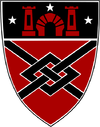- Culturally Authentic Pictorial Lexicon
-
Culturally Authentic Pictorial Lexicon 
URL http://capl.washjeff.edu/ Type of site academic Registration no Available language(s) German
French
Chinese
Spanish
ESLContent license CC-BY-NC Owner Washington & Jefferson College Created by Michael R. Shaughnessy Launched 2003 Current status active The Culturally Authentic Pictorial Lexicon is a dictionary database of images of various objects in a culturally authentic setting for language learning. All images are presented with a Creative Commons Attribution-Noncommercial license, allowing for broad academic use by language teachers.[1] The database is also useful for researchers in the field of applied linguistics, visual cognition, and automated image recognition.[2] The database averages 30,000 hits per month and has been incorporated into the curricula of many college and high-school level German teachers.[3]
The idea for the lexicon is partially based on Shaughnessy's experience with teaching materials that used American-based images and clip art to demonstrate German words and concepts.[4] By presenting objects in their culturally authentic context, the CAPL is designed to prepare students to live in the environment where the language is spoken.[4] The photographic entries are real photographs, not clip art, to force teachers to "teach terms for things that actually occur in everyday German life – instead of American concepts that have no direct European equivalent."[4]
The project was founded in 2003 as a pilot project with over 1,000 unique entries for the German language. The first images were collected by Shaughnessy in Germany and Austria through a grant from W&J College.[1] In 2008, the project was expanded to include more languages thanks to a $85,480 grant from the U.S. Department of Education.[3]
The CAPL was featured in an article in The Chronicle of Higher Education[4] and has been recommended for use by the Goethe Institute, German Academic Exchange Office and the National Capital Language Resource Center.[3] The book The Bilingual Mental Lexicon noted the Culturally Authentic Pictorial Lexicon's value in German language instruction for "naming and sorting activities, and in awareness-raising discussions."[5]
References
- ^ a b "About CAPL". Culturally Authentic Pictorial Lexicon. Washington & Jefferson College. http://capl.washjeff.edu/about.php.
- ^ Park, Jane (June 18, 2009). "CAPL, the Culturally Authentic Pictorial Lexicon". creativecommons.org. Creative Commons. http://creativecommons.org/weblog/entry/15353.
- ^ a b c "Culturally Authentic Pictorial Lexicon". Fund for the Improvement of Postsecondary Education Grant Database (United States Department of Education). 06/01/2008. http://fipse.aed.org/grantshow.cfm?grantNumber=P116Z080004.
- ^ a b c d Read, Brock (December 12, 2003). "Professor's Web Site Uses Photographs to Teach the German Language". The Chronicle of Higher Education. http://chronicle.com/weekly/v50/i16/16a03103.htm.
- ^ Pavlenko, Aneta (January 15, 2009). The Bilingual Mental Lexicon. Multilingual Matters. pp. 155. ISBN 978-1847691248. http://books.google.com/books?id=jkcyXAoI9PcC&lpg=PA125&ots=yiMHODCSra&dq=%22culturally%20authentic%20pictorial%20lexicon%22&lr=&pg=PA155.
External links
Washington & Jefferson College
Washington, PennsylvaniaAcademics U. Grant Miller Library • Abernathy Field Station • Topic: The Washington & Jefferson College Review

Athletics The Presidents • Football (Coaches / Seasons / 1922 Rose Bowl)
Facilities: Brooks Park • Cameron Stadium • Henry Memorial Center • IceoPlex • Ross Memorial Park and Alexandre Stadium
Grounds Buildings • McMillan Hall • Old Main • Old Gym • Hays Hall • The Burnett Center • Technology Center • Swanson Science Center
History History • Traditions • Jefferson Medical College • Pennsylvania College Cases • John McMillan's Log School
Campus List of buildings • The Burnett Center • Hays Hall • McMillan Hall • Old Gym • Old Main • Swanson Science Center • Technology Center •
People Alumni • List of presidents • John McMillan / Thaddeus Dod / Joseph Smith (Founders) • Tori Haring-Smith (President) • Faculty • Trustees
Student life Clubs • Literary societies • Greek letter organizations • Politics • Red & Black • Jefferson Duo • WNJR
Community Relations with City of Washington • Washington, Pennsylvania • East Washington Historic District • First Presbyterian Church 1793 • Washington Female Seminary
Related Culturally Authentic Pictorial Lexicon • Jefferson Salamander
Portal • Book • Category • Commons • Wikisource • Wikiquote 
This article about an education organization is a stub. You can help Wikipedia by expanding it.
